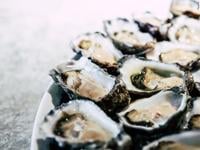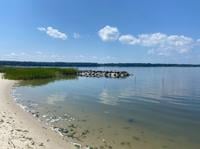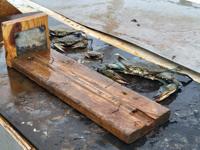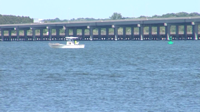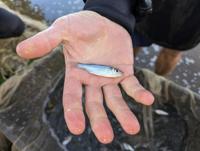The Environmental Protection Agency's Chesapeake Bay Program announced that 2,294 acres of oyster reefs in nine tributaries have been restored across Maryland and Virginia.
The Maryland State Police Aviation Command rescued three people from a capsized boat in the Chesapeake Bay.
This year’s report estimates the overall population at 238 million crabs—a sharp decline from 317 million in 2024. Despite the decline, the population remains within acceptable biological limits.
MARYLAND - The Chesapeake Bay’s health declined in 2024, but continues to show long-term improvement, according to the University of Maryland …
The winter dredge survey, which takes place from December through March, samples 1,500 sites across the Chesapeake Bay. The survey recorded declines across all age groups of crabs — adult males, spawning-age females, and juveniles.
A recent poll found that 52 percent believe environmental challenges facing the Chesapeake Bay will become more serious over the next five years, while 12 percent of those Chesapeake Bay-area residents expect challenges to become less serious.
The Maryland Department of Natural Resources is introducing a new public nomination process for the prestigious Admiral of the Chesapeake Bay Award.
The Chesapeake Bay’s 2024 dead zone measured near the long-term average, with hypoxic conditions peaking unusually early in June and declining sharply in August. Experts credit nutrient management efforts for maintaining progress but stress the need for continued action to combat climate change impacts on water quality.
Two candidates are competing for Maryland's First Congressional District seat. Congressman Andy Harris, first elected to the Maryland State Senate in 1998. Blane H. Miller III, a Navy veteran and businessman, emphasizes a "common-sense" approach, though he lacks prior political experience.
The Maryland Department of Natural Resources has released the results of its 2024 juvenile striped bass survey, showing another challenging year for the state's fish.







